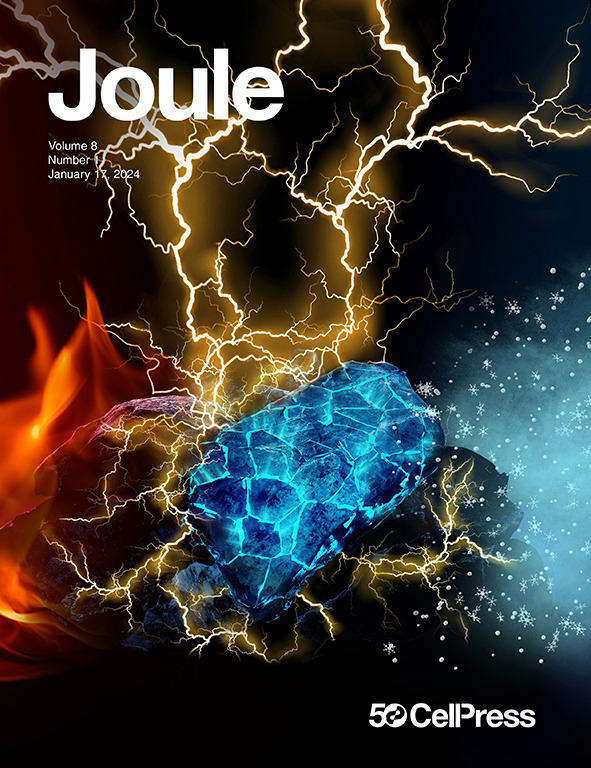Efficient blade-coated perovskite/silicon tandems via interface engineering
IF 38.6
1区 材料科学
Q1 CHEMISTRY, PHYSICAL
引用次数: 0
Abstract
Monolithic perovskite/silicon tandem solar cells have recently reached a certified record power conversion efficiency (PCE) of 34.6%. However, most of the high-efficiency tandems rely on spin coating to fabricate the perovskite absorber, which generally has limited scope for mass production. To address this, we demonstrate the potential of linear printing techniques, systematically improving 1.66 eV wide-band-gap (WBG) perovskites in single-junction perovskite solar cells (PSCs) via blade coating. Also, we enhance defect passivation and energy alignment between adjacent contacts, thus improving charge extraction in such blade-coated PSCs by introducing 2D/3D perovskite heterojunctions at their electron- and hole-collecting interfaces. Translating the 2D integrated blade-coated PSCs to our monolithic perovskite/silicon tandems significantly improved their performance, enabling an independently certified PCE of 31.2% for blade-coated tandems. Importantly, the encapsulated tandems retain 80% of their initial PCE for ∼1,700 h under ∼1-sun continuous illumination, demonstrating their durability and potential toward long-term deployment.


通过界面工程实现高效的叶片涂层过氧化物/硅串联系统
最近,单片透辉石/硅串联太阳能电池的功率转换效率(PCE)达到了 34.6% 的认证纪录。然而,大多数高效串联电池都依赖于旋涂来制造包晶石吸收器,这通常限制了大规模生产的范围。为了解决这个问题,我们展示了线性印刷技术的潜力,通过叶片涂层系统地改进了单结包晶体太阳能电池(PSCs)中的 1.66 eV 宽带隙(WBG)包晶体。此外,我们还通过在其电子和空穴收集界面上引入二维/三维包晶异质结,增强了相邻触点之间的缺陷钝化和能量对准,从而改善了这种叶片涂层 PSC 中的电荷提取。将二维集成的叶片涂层 PSC 转换为我们的单片包晶/硅串联器件,可显著提高其性能,经独立认证,叶片涂层串联器件的 PCE 为 31.2%。重要的是,在 1 个太阳的连续光照下,封装串联在 1,700 小时内仍能保持其初始 PCE 的 80%,这证明了它们的耐用性和长期部署的潜力。
本文章由计算机程序翻译,如有差异,请以英文原文为准。
求助全文
约1分钟内获得全文
求助全文
来源期刊

Joule
Energy-General Energy
CiteScore
53.10
自引率
2.00%
发文量
198
期刊介绍:
Joule is a sister journal to Cell that focuses on research, analysis, and ideas related to sustainable energy. It aims to address the global challenge of the need for more sustainable energy solutions. Joule is a forward-looking journal that bridges disciplines and scales of energy research. It connects researchers and analysts working on scientific, technical, economic, policy, and social challenges related to sustainable energy. The journal covers a wide range of energy research, from fundamental laboratory studies on energy conversion and storage to global-level analysis. Joule aims to highlight and amplify the implications, challenges, and opportunities of novel energy research for different groups in the field.
 求助内容:
求助内容: 应助结果提醒方式:
应助结果提醒方式:


